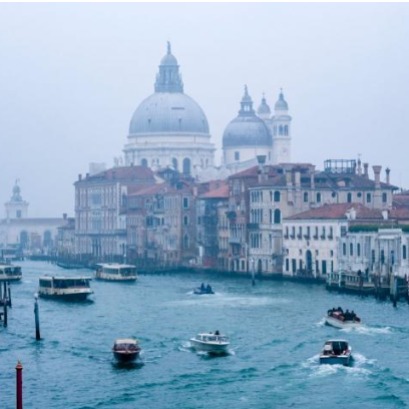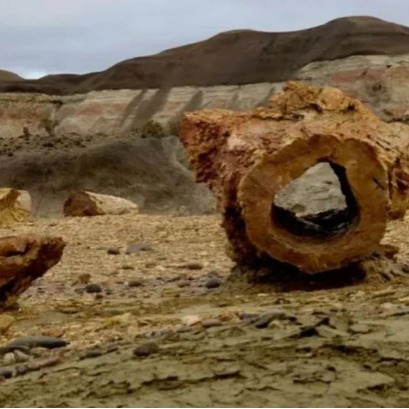
An inverted forest of millions of trees has held Venice for more than 1600 years
It is an millenary engineering work. For more than 1,600 years, Venice remains firm thanks to a unique foundation system in the world. These are millions of wooden posts stuck with the tip down in the muddy background of the lagoon. This base, which looks like an inverted forest, is composed of aler, oak, aliso, pine, fir and elmo. Thanks to this millenary engineering work, the city was officially founded on March 25, 421. Taking advantage of the laws of physics, monumental buildings have been built on land that seemed unstable. Only Rialtos bridge rests on 14,000 piles, while the Basilica of San Marcos sits over 10,000 oaks. No one knows how many wooden posts there are in total under the entire city, but the Venetian foundations have more than 16 centuries fulfilling their function, unlike modern materials such as concrete or steel, which have a projected life of 50 years on average as according to Alexander Puzrin, professor of geomechanics and geosystem engineering at the Federal Polytechnic University of Zúric.
A masterpiece of traditional engineering Battipali, workers specialized in the placement of posts, played a fundamental role. They stuck the posts by hand, singing to maintain rhythm and morals. His work was so recognized that he left popular Venetian expressions still in force, as I na Testa da Booter Pài, which means he has a head of knocking down piles and is used to describe someone clumsy. The piles were placed from the edge to the center, with a density of nine per square meter in a spiral. On them were installed beams or wooden planks, and finally, the stone of the building. To guarantee a constant wood supply, the Republic of Venice implemented pioneering forest conservation practices. In 1111, the first Italian document was recorded on sustainable forest management, in the FEMEME Valley, which allowed to preserve its forests until today. Stability under a threat controlled Venice solidity is not only due to wood. It is the combination of wood, water and mud that maintains stability. Although bacteria affect wood even in the absence of oxygen, the process is very slow. In addition, the water occupies the empty spaces and the mud maintains the pressure, which prevents structural collapse. Recent studies, such as that made by the universities of Padua and Venice, show that the wood has damage, but the system continues to work. The bell tower of the Church of Frari, for example, has sunk 1 millimeter per year since 1440. Despite this, the structure remains stable, thanks to the original engineering and the environment that protects it. Although during the nineteenth and twentie earthquakes However, as experts warn, it is not viable to build entire wooden cities. Since more than 1,600 years ago, Venice remains firm thanks to a unique foundation system in the world. These are millions of wooden posts stuck with the tip down in the muddy background of the lagoon. This base, which seems like an inverted forest, is composed of Alerce, Roble, Aliso, Pino, Apute and Olmo. Thank this millenary engineering work, the city was officially founded on March 25 of the year 421. Taking advantage of the laws of physics, monumental buildings have been built in a land that seemed unstable. Only Rialtos bridge rests on 14,000 piles, while the Basilica of San Marcos sits over 10,000 oaks. No one knows how many wooden posts there are in total under the entire city, but Venetian foundations have more than 16 centuries fulfill Geomechanics and Geosystems Engineering at the Federal Polytechnic University of Zúric. A masterpiece of traditional engineering Battipali, workers specialized in the placement of posts, played a fundamental role. They stuck the posts by hand, singing to maintain rhythm and morals. His work was so recognized that he left popular Venetian expressions still in force, such as you à na Testa da Bater Pài, which means has a head of knocking down piles and is used to describe someone clumsy. The piles were placed from the edge to the center, with a density of nine per meter square in a spiral. On them were installed beams or wooden planks, and finally, the stone of the building. To guarantee a constant wood supply, the Republic of Venice implemented pioneering forest conservation practices. In 1111, the first Italian document was recorded on sustainable forest management, in the FEMEME Valley, which allowed to preserve its forests until today. Stability under a threat controlled Venice solidity is not only due to wood. It is the combination of wood, water and mud that maintains stability. Although bacteria affect wood even in the absence of oxygen, the process is very slow. In addition, the water occupies the empty spaces and the mud maintains the pressure, which prevents structural collapse. Recent studies, such as that made by the universities of Padua and Venice, show that the wood has damage, but the system continues to work. The bell tower of the Church of Frari, for example, has sunk 1 millimeter per year since 1440. Despite this, the structure remains stable, thanks to the original engineering and the environment that protects it. Although during the nineteenth and twentie earthquakes However, as experts warn, it is not viable to build entire wooden cities. Since more than 1,600 years ago, Venice remains firm thanks to a unique foundation system in the world. These are millions of wooden posts stuck with the tip down in the muddy background of the lagoon. This base, which seems like an inverted forest, is composed of Alerce, Roble, Aliso, Pino, Apute and Olmo. Thank this millenary engineering work, the city was officially founded on March 25 of the year 421. Taking advantage of the laws of physics, monumental buildings have been built in a land that seemed unstable. Only Rialtos bridge rests on 14,000 piles, while the Basilica of San Marcos sits over 10,000 oaks. No one knows how many wooden posts there are in total under the entire city, but Venetian foundations have more than 16 centuries fulfill Geomechanics and Geosystems Engineering at the Federal Polytechnic University of Zúric.
IT MAY INTEREST YOU
 We have found the oldest fossil forest on Earth: Tipa de protárboles
We have found the oldest fossil forest on Earth: Tipa de protárboles
Researchers from Cardiff and Cambridge universities found the oldest fossil forest in Great Britain in Britain. Until before this discovery, that title belonged to the remains of another forest found in New York in 2019, which dates back to around 386 million years. This, discovered in 2024, is four million years older.
 He is the most resistant wood producer in the world and grows in Argentina: he knows the tree that surprises with its properties
He is the most resistant wood producer in the world and grows in Argentina: he knows the tree that surprises with its properties
? In the north, one of the oldest and most resistant trees on the planet survives. ? Its name is Guayacán and has medicinal properties, in addition to an amazing wood.
 The forest turned into the worlds largest stone is in Argentina
The forest turned into the worlds largest stone is in Argentina
In southern Argentina, an ancient forest converted into stone stands as a unique testimony of the natural history of the world and a silent emblem of the deep Patagonia.





















